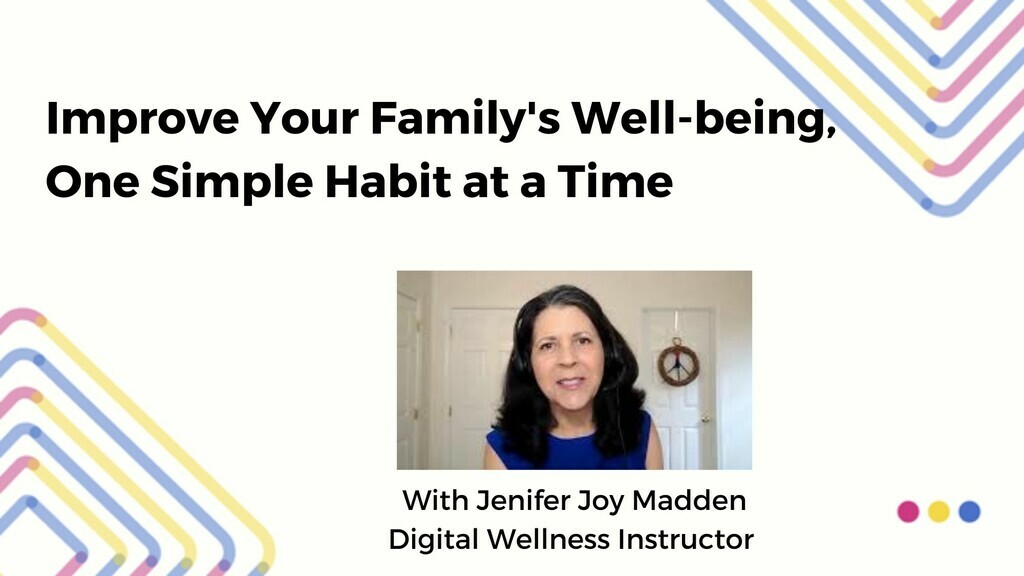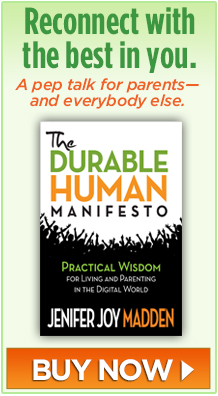
Starting simple wellness habits can help families move beyond the pandemic, which took a heavy toll on health, social skills, and confidence. New surveys reveal the extent of the damage, but point to avenues for healing and durability.
Even though the pandemic caused “major disruptions” in their children’s lives, many parents believe family bonds grew stronger. “Most parents set out to create safe and loving homes for their children, which led to closer positive relationships” according to an American Academy of Pediatrics (AAP) Family Snapshots survey done with the U.S. Centers for Disease Control.
But even as they tried to create a sense of comfort, parents and care givers were under stress. The pandemic changed the nature of almost half the jobs held by those who had been working full- or part-time.
1 Billion Meals Not Served
Many more American families did not have enough to eat. “Estimates suggest food insecurity in households with children more than doubled,” according to Eliza Kensey, associate research scientist at Columbia University Mailman School of Public Health. Black and brown families were disproportionately affected, as were families in rural communities.
During the first two months of the pandemic, kids missed out on an estimated 1 billion free or reduced-price school meals. 30 to 40% of those meals have yet to be replaced, Kinsey’s analysis shows. “Loss of access to school meals, such as we saw with school closures during the COVID pandemic, puts millions of households at increased risk of food insecurity,” Kinsey explained in a SciLine media briefing.
In households with enough food, children’s weight crept upward. In a small study of mainly non-hispanic white children after the first 5 months of quarantine, “the majority of children experienced accelerated weight gain above and beyond what is observed during a typical 3-month summer,” according to a report in the American Journal of Lifestyle Medicine.
The authors point to “the potential negative consequences of prolonged periods of time quarantined at home where children are removed from their ‘typical’ daily structure and routine.” The lockdown effect, they add, “could be even greater on children from racial or ethnic minority groups.”
The Eyes Have Had It

Of the millions of children who could attend online school, many had aches and pains on a daily basis, according to a March 2021 parent Pulse Survey by the Digital Wellness Lab of Boston Children’s Hospital. Chief among them: eye pain, headaches, and blurry or double vision.
“I see a huge increase in my practice,” reports Larry Jones, a doctor of optometry and president-elect of the American Optometric Association. The AOA held an emergency summit in March 2021 because of what organizers consider “a burgeoning crisis” for children’s eye health.
11.5 Hours a Day on Devices
Kids spent more time than ever on screens. Students were online for school an average of 4.6 hours a day. During that time, students were usually in their bedrooms with the door shut.
They were also multi-tasking. Alt-tabbing between screen activities or using multiple devices at once continued during homework and “always during recreational device use,” according to the Pulse Survey.
Talking with friends, playing video games, and other types of recreational use accounted for another 7 hours of screentime. Thus, the average child in the Pulse Survey spent almost 12 hours per weekday using a digital device.
Many parents and kids agree that connections made through video chats, social media, and other tech platforms were lifelines that kept friendships and psyches intact.
Fights Erupt
Still, all the screen time led to strife. Many parents report they argued with their kids at least a few times a week over how long and when they were using screens, according to the Pulse Survey.
Only one in every three families considers their household screen use was “completely under control” during the pandemic. One in four report that family members at least partly lost control of their screen use, including adults.
Problems Back in School
Children returning to in-person school are displaying the effects of habitual multi-tasking. “What we’re seeing now with some kids is that they’re really fidgety in school. They can’t sit still at a desk. They can’t maintain their focus,” according to “anecdotal evidence” relayed by Catherine Steiner-Adair, a psychologist leading a panel of mental health experts convened by the non-profit Children and Screens.
Kids who haven’t yet returned to in-person school may experience “anticipatory anxiety.” “In little children all the way through high school, we’re seeing a fear of going to school,” says Steiner-Adair.
Patience is Recommended
Kids need their parent’s reassurance now, just as they have throughout the pandemic. “Recognize it will take time to transition to allow for behavior change,” says Alexis Lauricella, an educator and director of technology at the Early Childhood Center of the Erikson Institute.
Set expectations from the outset. “Tell them, ‘It’s gonna be different from 2019,’” advises Lauricella.
For kids who are worried about rejoining activities away from home, “Practice by going out into public spaces,” advises Steiner-Adair.
Wellness Habits for the Next Normal

To nudge families into better media management, “Take baby steps to transition out of your current tech patterns into healthier use,” advises Lauricella.
I presented 9 such baby steps on Digital Wellness Day 2021. The top 5:
Share Device-free Meals
Perhaps the most effortless way kids can rebuild their social and communication skills is to sit down for family meals. That gives them a daily opportunity to practice their manners as they take part in the give and take of conversation. Parents also have the daily opportunity to keep an eye on their kids’ well-being. But that can only happen when meal participants can see and hear each other. To make that possible, turn off the TV off and place attention-stealing devices out of sight. My family has learned over the years to pop their phones in a basket before we sit down to eat.

Turn Off Screens and Talk
Turning off screens an hour or two before bedtime gives parents a chance to talk one-on-one with their kids. “Children actually have many different fears or concerns than adults do. And you can’t reassure people effectively if you don’t know what they’re actually concerned of,” says David Schonfeld, M.D., director of the national Center for School Crisis and Bereavement. “Don’t tell children they shouldn’t be worried – give them strategies to deal with distressing feelings.”
With screens off, kids can also be alone with their thoughts and make some sense of the information they’ve consumed during the day. Everyone can sleep more easily and longer when the sleep-disrupting blue light of screens is turned off. If everyone has an alarm clock, phones can be charged out of the bedroom—another way to assure solid sleep.
Read Books
This simple habit stretches kids’ attention spans and helps them re-learn to focus on one task at a time. The longer form of a book or magazine article allows kids to delve more deeply into one topic or story, as opposed to the typical online reading style of scanning to get the gist. High school and college students consistently report reading on paper is especially beneficial. “They consistently say, overall, they concentrate better, they learn, they remember better with print,” Naomi Baron, American University Professor Emerita of Linguistics said in the Children and Screens webinar “Reading in a Digital World.”
Another benefit of reading on print at bedtime: “there’s a positive effect on sleep patterns,” according to Dr. Mark Rosenfield, editor of the journal Ophthalmic and Physiological Optics.
Go Outdoors
Now that they can go outside, kids will revel in their newfound sense of freedom. With no adult-directed agenda, they can dip into their imaginations and follow their innate curiosity. Playing outside also helps kids get their recommended hour of daily exercise.
And how about this? Being outdoors helps kids maintain durable vision. Early evidence shows sun exposure can be a hedge against Myopia. Also known as being near-sighted or short-sighted, the eye condition has become a worldwide epidemic among children. Researchers suspect kids who spend lots of time on screens with few breaks and little time outdoors may be especially vulnerable to developing Myopia.
Take Regular Eye Breaks
To control digital eye strain—which causes eye pain, blurry vision, and headaches—have a reason to use a screen, rather than passively scrolling. When you do use a device, take frequent eye breaks so your eye muscles relax and you keep your ability to see near and far.
Many eyecare professionals advise the 20-20-20 rule. That is, for every 20 minutes you stare at a screen, look up at something at least 20 feet away for at least 20 seconds. I attest, it works like a charm.
For children, the rule is being extended to 20-20-20-20-2. That is, so they can be in the sunshine, kids should take regular 20-minute breaks outside, for a total of two hours spent outdoors each day.
Adversity Has Its Advantages
Some good news: the pandemic very likely made you more durable. When we face adversity, we dig deep into our inner resources. As I wrote in The Durable Human Manifesto about survivors of recent hurricanes:

The AAP also notes the pandemic gave children and adults the opportunity for “post-traumatic brain growth,” noting that “people’s brains grow, and their resilience grows, when people recover from disasters.”
Certainly when the novel coronavirus arrived, you needed resilience to recover from the sudden adversity. But as we emerge from the pandemic, uncertainty is likely to continue indefinitely. We need to be durable—that is, to endure for the long run—so we can withstand life’s bumps in the road.
Building durability is a lot like the game of golf—a lifelong pursuit where there’s always room for improvement. We are all individually more more or less durable in various aspects of our lives and health.
With the Durable Family Pledge, families can decide together which of 9 durability-building wellness habits apply to them. Family members then agree to try a habit or habits for 4 short weeks—just long enough to stick.
About the author:
Jenifer Joy Madden is a certified digital wellness instructor, lifelong communicator, and child advocate. She is an adjunct professor of broadcast and digital media at Syracuse University and a multi-media health journalist. Her work has informed millions through news outlets including ABC News and the Washington Post.
Jenifer founded DurableHuman.com in 2009, is the author of The Durable Human Manifesto and How To be a Durable Human, has designed multiple digital hygiene products, and is the proud mother of three grownup practicing durable humans.





[…] Learn more about how kids can achieve better digital wellness in and out of school in the webinar, Improve Your Family’s Well-being Post-Pandemic, One Simple Habit at a Time – YouTube and reading the post, Wellness Habits Help Families Adjust Post Pandemic | The Durable Human […]
[…] Learn more about how kids can achieve better digital wellness in and out of school in the webinar, Improve Your Family’s Well-being Post-Pandemic, One Simple Habit at a Time – YouTube and reading the post, Wellness Habits Help Families Adjust Post Pandemic | The Durable Human […]
[…] Learn more about how kids can achieve better digital wellness in and out of school in the webinar, Improve Your Family’s Well-being Post-Pandemic, One Simple Habit at a Time – YouTube and reading the post, Wellness Habits Help Families Adjust Post Pandemic | The Durable Human […]